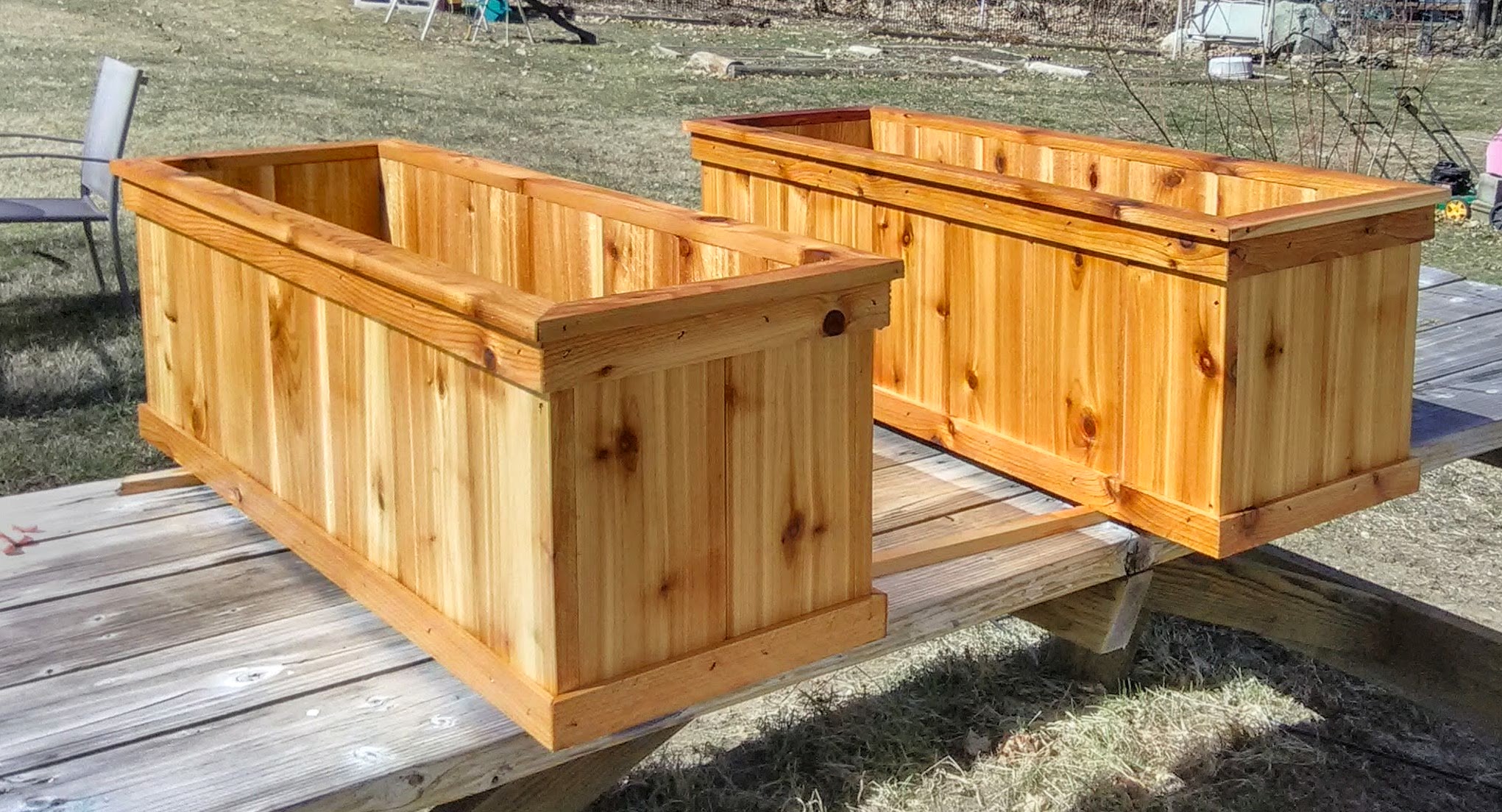Cedar rail planter boxes combine the natural beauty and durability of cedar wood with a versatile design that complements any outdoor space. Crafted from premium-grade cedar, these planters offer exceptional resistance to rot, decay, and insects, ensuring longevity in even the harshest weather conditions.
Available in a range of sizes and shapes, cedar rail planters provide ample space for a variety of plants, from vibrant flowers to lush herbs. Their open-slatted design promotes excellent drainage, preventing waterlogging and root rot.
Cedar Rail Planter Box Design and Materials

Cedar wood is a popular choice for planter boxes due to its natural resistance to rot and decay. Cedar contains natural oils that act as a preservative, making it highly durable and resistant to moisture and pests. It is also lightweight and easy to work with, making it a versatile material for various planter box designs.
Cedar Rail Sizes and Shapes
Cedar rails for planter boxes come in various sizes and shapes to accommodate different design preferences and plant requirements. Common sizes include 2×4, 2×6, and 2×8 inches, with lengths typically ranging from 4 to 8 feet. The shape of the rails can vary from square to rounded edges, providing aesthetic options to complement different garden styles.
Advantages and Disadvantages of Cedar Rails for Planter Boxes
Advantages:
- Natural durability: Cedar’s natural resistance to rot and decay makes it a long-lasting material for planter boxes, even in outdoor environments.
- Lightweight: Cedar is lightweight, making it easy to move and handle, especially for larger planter boxes.
- Aesthetic appeal: Cedar’s natural reddish-brown color and attractive grain patterns add aesthetic value to gardens.
- Pest resistance: Cedar’s natural oils deter pests, such as termites and insects, reducing the risk of damage to plants.
Disadvantages:
- Cost: Cedar is a relatively expensive wood, which can increase the overall cost of planter boxes.
- Splitting: Cedar rails may be prone to splitting, especially if not properly sealed or protected from moisture.
- Fading: Cedar’s natural color may fade over time when exposed to sunlight, requiring occasional staining or sealing to maintain its appearance.
Construction and Assembly

Constructing a cedar rail planter box involves precise cutting, careful joining, and secure fastening techniques to ensure its durability and longevity.
Cutting the Cedar Rails
Before assembling the planter box, it is crucial to cut the cedar rails to the desired length. Measure and mark the rails accurately, ensuring precise cuts using a miter saw or a circular saw with a sharp blade. Wear appropriate safety gear, including eye protection and gloves, during cutting.
Joining the Rails, Cedar rail planter box
To join the cedar rails, utilize galvanized or stainless steel screws. Pre-drill pilot holes to prevent splitting the wood and ensure a secure hold. Countersink the screws slightly below the surface of the wood for a flush finish.
Securing the Rails
To enhance the sturdiness of the planter box, apply construction adhesive to the joints before securing them with screws. This additional layer of adhesion provides increased strength and prevents the rails from shifting over time.
Tips for a Durable Construction
* Select high-quality cedar rails that are free from knots or defects.
* Use galvanized or stainless steel screws to resist corrosion.
* Pre-drill pilot holes and countersink screws to prevent splitting.
* Apply construction adhesive to the joints for added strength.
* Consider using corner brackets for additional support, especially for larger planter boxes.
* Allow the adhesive to cure completely before filling the planter box with soil.
Planting and Maintenance

Cedar rail planter boxes offer optimal growing conditions for various plants, thanks to their excellent drainage and natural resistance to rot. To ensure the health and vigor of your plants, it’s essential to provide the right soil conditions, drainage, and ongoing care.
Ideal Soil Conditions
Cedar rail planter boxes require well-drained soil that is rich in organic matter. A mixture of potting soil, compost, and perlite is recommended to provide adequate drainage and aeration. Avoid using heavy clay soils, as they can lead to waterlogging and root rot.
Drainage Requirements
Good drainage is crucial for preventing root rot and other water-related issues. Ensure that the planter box has drainage holes at the bottom to allow excess water to drain out. If the planter box is placed on a solid surface, such as a patio or deck, elevate it slightly using bricks or feet to improve drainage.
Suitable Plants
Cedar rail planter boxes are suitable for growing a wide range of plants, including:
- Flowers: Petunias, geraniums, marigolds, zinnias
- Vegetables: Tomatoes, peppers, cucumbers, lettuce
- Herbs: Basil, parsley, cilantro, mint
Watering
Water the plants in your cedar rail planter box regularly, especially during hot and dry weather. Allow the soil to dry out slightly between waterings to prevent overwatering. Use a watering can or hose with a gentle spray nozzle to avoid damaging the plants.
Fertilizing
Fertilize the plants in your cedar rail planter box every few weeks during the growing season. Use a balanced fertilizer diluted to half strength. Avoid over-fertilizing, as it can burn the plants.
Maintaining Plant Health
Regularly inspect your plants for pests and diseases. Remove any affected leaves or stems promptly. Prune the plants as needed to remove dead or diseased growth and encourage new growth.
